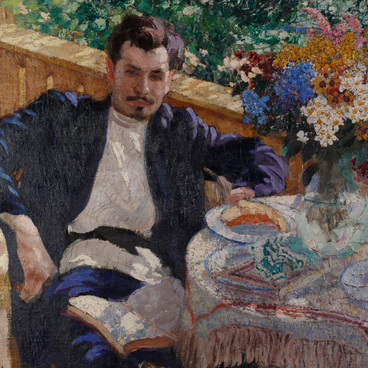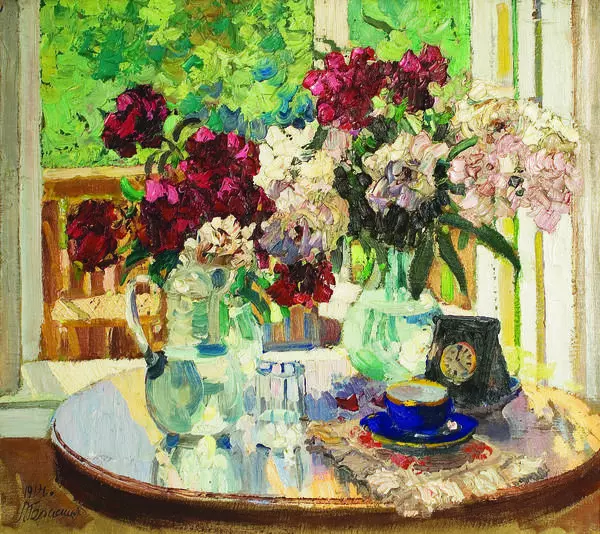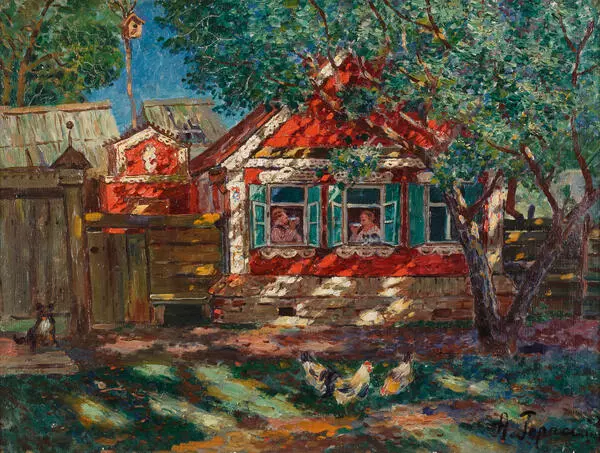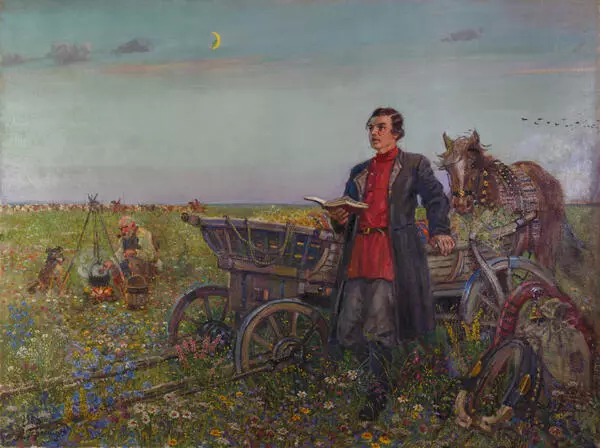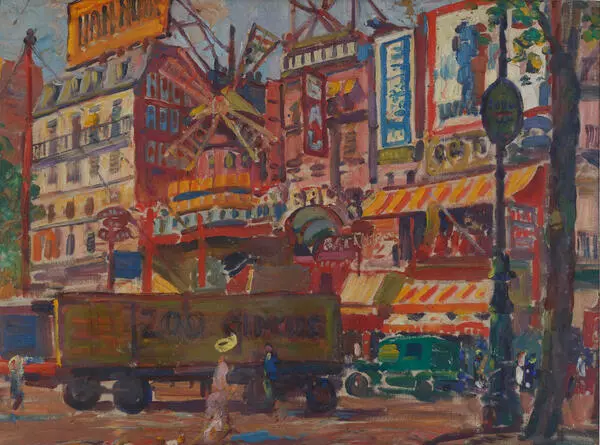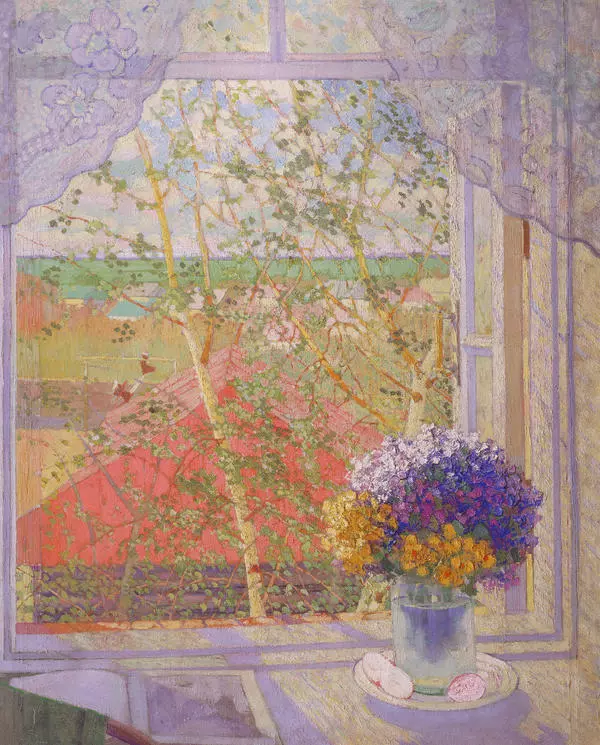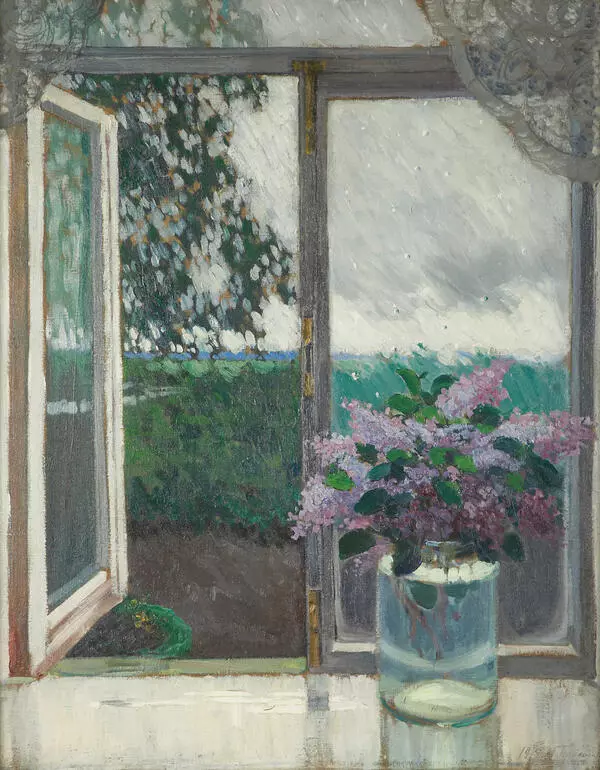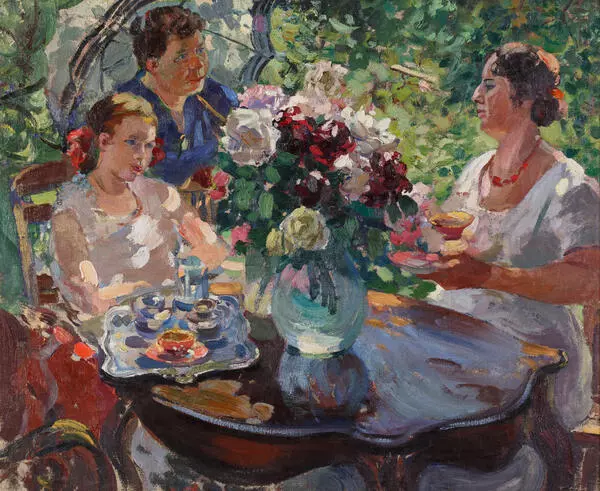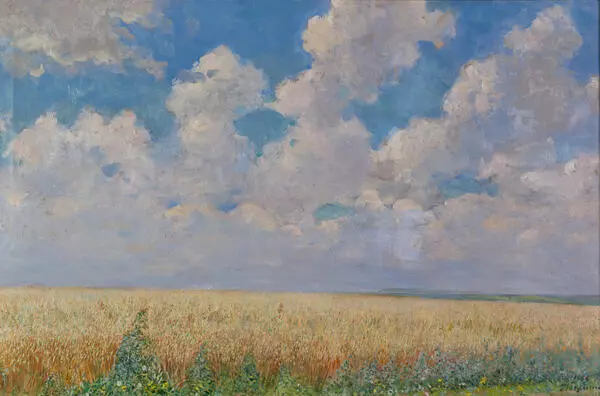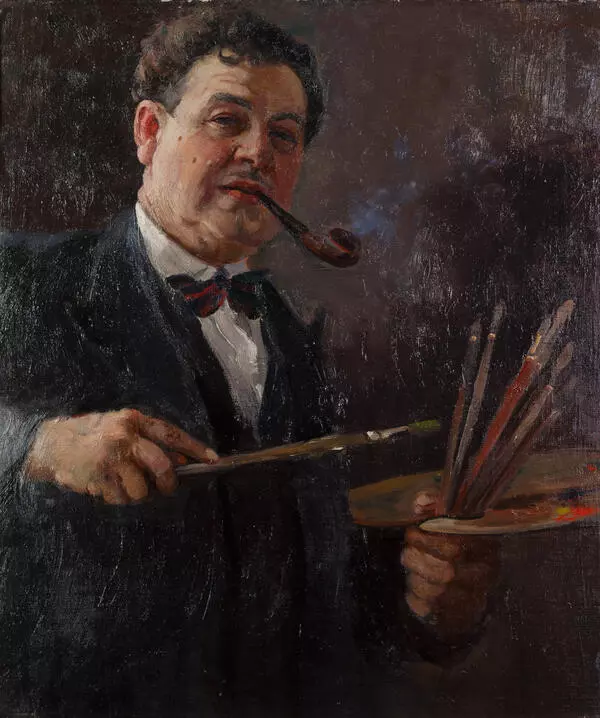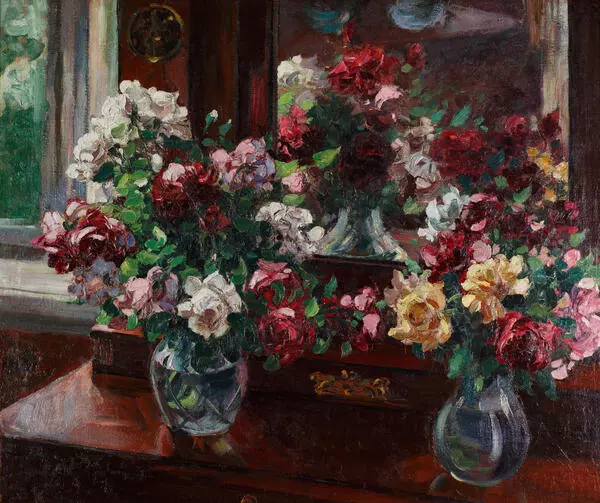Although the works of Alexander Mikhailovich Gerasimov were created at different times and in different techniques, they are united by the theme of love for his birthplace. The artist’s penchant for a quiet and unhurried pace of a small provincial town, which is exactly what the town of Kozlov (now Michurinsk) used to be, lasted his whole life and helped him to capture the subtle beauty of the local nature.
The painting “March” depicts one of the picturesque streets of the artist’s cherished hometown with old houses, rickety fences, gateposts, and a horse harnessed to a sled. The picture perfectly conveys the somewhat slumberous atmosphere of a provincial Russian town right before the great upheavals of the First World War that began that same year, the revolution that followed it, the fierce civil war, and the unparalleled trials that befell the people in the 20th century.
The painting depicts the time when, after frosty winter nights, everything is warmed up by the sun. The advent of spring is conveyed through numerous details: the sunbeams playing on the house window, the snow melting on the iron roof, and the sky that is light blue in March. Snow is a frequent feature of Alexander Gerasimov’s landscapes. Some portion of the March snow is covered with a sparkling ice crust, and in places where it melts, it becomes loose and heavy. There is almost no snow on the trees and the iron roof of the stone building, but the thatched roof of the log house still has it.
The scene is seamlessly combined with the animalier theme: the artist often depicted animals on his canvases. The painting “March” shows a harnessed horse covered with a blanket; a dog, lying on a pile of straw and bathing in the rays of the March sun. The straw seems to have been recently scattered over the snow and stands out in the picture with its bright yellow. The painter also included small details that help the viewers to imagine the way of living that existed in Russian governorates of the early 20th century: pitchforks and rakes against the wall, wooden sleds, a colorful homespun horse blanket, and a wooden box for feeding horses.
Alexander Gerasimov filled this scene with a realistic depiction of nature, combined with lyrical and slightly nostalgic overtones.
The painting “March” depicts one of the picturesque streets of the artist’s cherished hometown with old houses, rickety fences, gateposts, and a horse harnessed to a sled. The picture perfectly conveys the somewhat slumberous atmosphere of a provincial Russian town right before the great upheavals of the First World War that began that same year, the revolution that followed it, the fierce civil war, and the unparalleled trials that befell the people in the 20th century.
The painting depicts the time when, after frosty winter nights, everything is warmed up by the sun. The advent of spring is conveyed through numerous details: the sunbeams playing on the house window, the snow melting on the iron roof, and the sky that is light blue in March. Snow is a frequent feature of Alexander Gerasimov’s landscapes. Some portion of the March snow is covered with a sparkling ice crust, and in places where it melts, it becomes loose and heavy. There is almost no snow on the trees and the iron roof of the stone building, but the thatched roof of the log house still has it.
The scene is seamlessly combined with the animalier theme: the artist often depicted animals on his canvases. The painting “March” shows a harnessed horse covered with a blanket; a dog, lying on a pile of straw and bathing in the rays of the March sun. The straw seems to have been recently scattered over the snow and stands out in the picture with its bright yellow. The painter also included small details that help the viewers to imagine the way of living that existed in Russian governorates of the early 20th century: pitchforks and rakes against the wall, wooden sleds, a colorful homespun horse blanket, and a wooden box for feeding horses.
Alexander Gerasimov filled this scene with a realistic depiction of nature, combined with lyrical and slightly nostalgic overtones.



